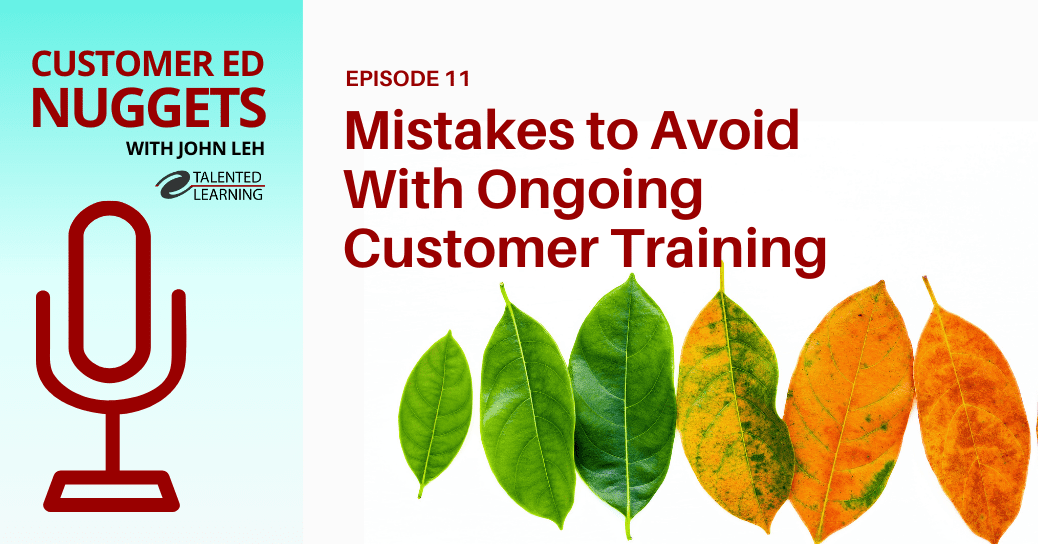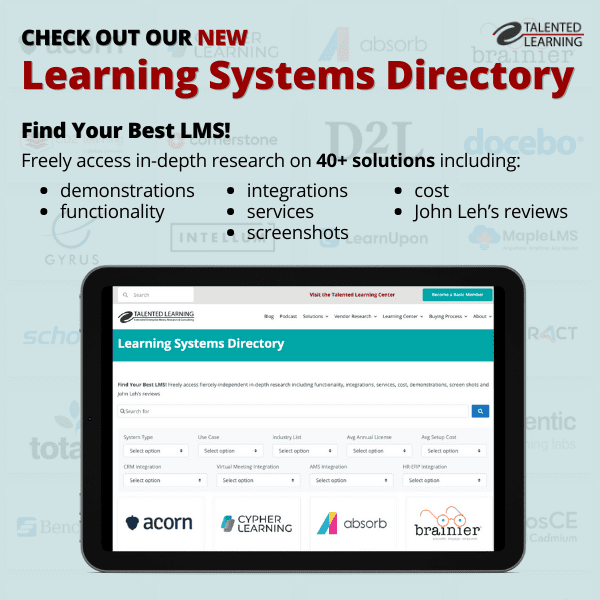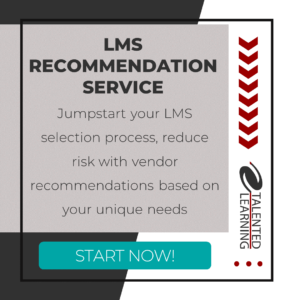
In last week’s post, I examined the need for training providers to rely on flexibility as a strategic advantage. Why? So you can adjust to an uncertain future more quickly than your competitors. However, learning systems agility isn’t just about technology. It’s about flexibility and speed across the board – including your business model, content strategy and operational workflows, as well as your learning ecosystem.
Fortunately, there are many ways to achieve the kind of learning systems agility that training providers need. But instead of describing abstract concepts, I think it’s more helpful to outline real-world examples.
For instance, today let’s focus on a company that might surprise you – JLG Industries. When I say words like nimble or responsive, you probably think of fast-paced industries like high technology or healthcare.
Most of us wouldn’t immediately think of a heavy equipment manufacturer that serves the construction industry. Nevertheless, JLG considers agility a strategic advantage.
Interestingly, this strategic shift wasn’t a hasty response to the COVID outbreak. Instead, JLG decided to move to a more flexible learning tech infrastructure years ago, betting that the investment would pay-off whenever unforeseen circumstances arose in the future. Now, after the unexpected chaos of this past year, I imagine they’re pleased with that decision.
Let’s look closer at JLG’s story…
Learning Systems Agility at JLG Industries
HISTORY
According to OSHA, more construction injuries happen when people are working on ladders than in any other situation. That’s why JLG built the world’s first aerial lift machine decades ago. And today, JLG remains the world’s leading aerial work platform designer and manufacturer.
To ensure that customers know how to operate, service and maintain this equipment, the company introduced its flagship JLG University in 2011. This online hub was designed as a central, go-to destination for product knowledge and instruction, where anyone can get free access to product information, step-by-step video guides, live online classes and self-paced elearning, as well as traditional classroom training.
Then, nearly 4 years ago, JLG launched its AccessReady site for construction professionals who want to become licensed to operate specific JLG machines. This is where equipment operators can quickly find qualified instructors, select relevant learning plans and manage their learning credentials.
CHALLENGE
From a single online interface, JLG serves an increasingly diverse spectrum of learners from around the world – each with unique educational, compliance and certification goals.
The need for flexibility was a key reason why the company originally developed JLG University on the Moodle open source platform. However, as its audience continued to expand and requirements grew more complex, JLG realized it needed a more robust, extensible solution. That’s when an upgrade to Totara Learning became the logical next step.
SOLUTION
Why did JLG choose Totara as the backbone of its next-generation learning infrastructure? To better understand the selection criteria, I spoke with three insiders:
Darren LaRue, Product Training Specialist at JLG
Charles Ackerman, Sr. Solutions Strategist at development partner, Remote Learner
Lars Hyland, CLO at Totara Learning
In my opinion, the factors that helped JLG find its future-proof foundation make sense for any organization that seeks learning systems agility. Take a look at these 5 must-haves:
1) Extensibility
Extensibility is vital if you want to expand system functionality on an incremental basis. As Lars Hyland says, with an extensible open source platform like Totara, training providers aren’t forced to solve every issue at launch with “everything 100%-automated on day one.”
Instead, it may be possible to go live with 90% of your desired functionality supported by a combination of existing plugins and extensions that are easy to implement out-of-the-box. Then, you could continuously expand and enhance the original solution by switching to custom-developed components, over time.
Charles Ackerman says that from a development perspective, this kind of open source platform is ideal because, “We’re not locked into exactly what Totara provides. We have the ability to expand on it for unique requirements that clients might not even think about.”
2) Integration
This is also extremely important – especially in an extended enterprise stack, where data moves across multiple platforms. For example, an LMS may need to tap into employee data from an HR system. Or the LMS needs to push course completion data out to an organization’s CRM. Often in these environments, data must be exchanged with a single sign-on tool, an e-commerce system, a certification management platform, or any combination of business platforms and applications.
According to Charles Ackerman, “More and more frequently, one of the first things prospective clients ask us is, ‘Can your learning system work with this?’ or ‘Can you integrate with that?’ So it’s absolutely key to think about the overall ecosystem.”
And the challenge isn’t just about deciding whether integration is possible, but also determining which integrations matter most, and how to connect-the-dots in the most streamlined way.
Charles says, “You’ll want to be sure you identify which functionality is a drop-dead must-have, rather than just nice-to-have. Then look at how your solution can accomplish that goal without you necessarily having to develop a huge, complex integration right off-the-bat. You’ll want to leverage what’s already available as part of a wider digital experience.”
3) Configurability
What if a learning system comes with an impressive selection of built-in functionality that overlaps with existing capabilities elsewhere in your ecosystem? Will it play well with other systems that are already in place? And is that a value-add?
Charles thinks this is one of Totara’s greatest strengths. “Totara can accomplish many things, but other systems in the extended enterprise stack may already provide some of that functionality. Maybe you already have an appraisal system in place, so you don’t need another right now.”
“That’s the beauty of this platform,” he says. “It’s very easy to turn-off specific areas of the application and put that feature on ice. Perhaps there are other priorities right now. But that doesn’t mean it’s gone forever. It just means we can flip the switch and turn it back on at another point, whenever you’re ready in the future.”
4) Flexible Content Support
On a daily basis, the JLG learning team receives customer requests for specific content that must be rapidly created and deployed. So the system needs to be flexible and responsive at this level, as well.
Darren LaRue notes: “Often, we’re asked to deliver face-to-face classes. We may travel to the customer’s location to deliver that kind of training. Regardless, we must be able to create that content very quickly. Then we need to integrate those courses into our normal flow. So our system needs to help us do that efficiently and effectively.”
5) Advanced Analytics
No forward-thinking company can improve its training outcomes without the ability to analyze how learners are interacting with content, and how that behavior translates into business results. This is why insights-oriented analytics are gaining momentum.
These tools should help you determine the most effective ways to reach and engage your audience, and how to provide a learning experience that leads to your organization’s desired outcomes.
And above all, as Lars Hyland says, these tools should “help you understand how to adapt as you gather intelligence about what’s working, what’s not, what’s missing and how to improve continuously.”
Fast-Forward to the Future
That’s an impressive list of future-friendly requirements! But JLG implemented its new LMS more than 5 years ago, so the future is now – and always is. Did their decision stand the test of time? Apparently so.
Here’s an update we found on the JLG website: The company has since introduced a virtual training simulator for equipment operators of all skill levels. This virtual reality training experience is fully integrated into the company’s learning ecosystem.
I bet that no one at JLG envisioned this capability when they were choosing a future-proof LMS!
Conclusion
JLG is only one example of learning systems agility in action. But I hope this snapshot helps you determine which criteria to consider for a future-ready learning infrastructure.
Your priorities may not lead you to the same learning system – but that’s not the point. My goal is to illustrate how successful organizations are putting sustainable training transformation into practice.
I look forward to showcasing other real-world stories as this year unfolds – so stay tuned. (By the way, if you know an organization that’s doing a stellar job with training transformation, we’d love to hear about it. Feel free to contact us and we might even share your case study in a future post.)
Thanks for reading!
Share This Post
Related Posts
The Future of Customer Education: Customer Ed Nugget 16
Customer education is rapidly evolving as organizations embrace new strategies and tech. What does this mean for the future of customer education? See what experts say on this Customer Ed Nuggets episode
Education Strategy Mistakes to Avoid: Customer Ed Nugget 15
What does it take to deliver a successful customer education program? It starts with a solid education strategy. Learn how to avoid common pitfalls on this Customer Ed Nuggets episode
Which LMS is Best for You? New Shortlisting Tool for 2024
How can you find the best learning system for your business? Our LMS shortlisting tool can help. Learn about the 2024 RightFit Solution Grid. Free, reliable guidance based on our independent research
How to Build a Learning-Based Business: Executive Q&A Notes
Building and selling online courses may seem easy, but building a profitable learning-based business is far more complex. Find out what successful leaders say about running this kind of business
The Rewards of Community Building: Customer Ed Nugget 14
What role does community play in your customer relationships? Find out why community building is such a powerful force in customer education on this Customer Ed Nuggets episode
Benefits of Training Content Syndication: Customer Ed Nugget 13
If you educate customers online, why should you consider content syndication? Discover 10 compelling business benefits in this Customer Ed Nuggets episode
Top Marketing Skills to Master: Customer Ed Nugget 12
Successful customer education programs depend on professionals with expertise in multiple disciplines. Which marketing skills lead to the best results?
How to Measure and Improve Partner Training ROI
An educated channel is a successful channel. But how do you know if your educational programs are effective? Learn from an expert how to evaluate partner training ROI
Mistakes in Ongoing Customer Training: Customer Ed Nugget 11
Customer education doesn't stop with onboarding. It pays to invest in ongoing customer training. Learn which mistakes to avoid in this Customer Ed Nuggets episode














FOLLOW US ON SOCIAL